Steel, beams and a problem
Let's start with the problem. I can't solve it today as today is a public holiday in RoI and the MBC guy I need to speak to isn't available, so there's nothing doing until tomorrow.
I need to get the scaffolding sorted for when the timber frame team arrive on 27th August and thought I had this well in hand. I sort of still do, but there's a H&S problem with the scaffold erection and I've spent a little time this morning tracing back to the source of the error. I need a single lift of scaffolding for the construction of the attached single storey flat roof garage that is at the north east corner of the building. On the topographical survey that was done for the property by the vendor (for the planning permission that he sold it with), some overhead power cables are shown nearby and the building was designed so that the far corner of the garage cleared these. So far so good. All the setting out and construction has been done according to this. Now, lack of observation on my part, but it is now obvious that instead of clearing the north east corner of the garage by a couple of metres, the OH cables are, in fact, directly overhead of that corner and where the scaffolding would be.
I had a look on the topo survey and the OH cables are incorrectly plotted - they are shown further out than they are in reality, so I'm not sure if this is collective responsibility, or who's it is. I'm not really interested in attributing blame to anyone at this stage, I'd rather just find a solution that gets the house and garage built within the current schedule.
The issue is this - the cables are high tension and the scaffolder's original suggestion has proved to be a no-goer as the DNO has said that the cables are very high voltage and would just burn through any shrouding. Alternatively, they could switch off the supply running through these cables, but it would have to be for the entire time that the scaffolding is in place. I didn't even bother asking for a price on this as it's probably more than the build cost.
Where do I go from here? Well, I need to speak with MBC tomorrow and find out if the garage can be built without scaffolding, or if there is some other way around this. Although all access and materials are coming in away from the OH cables, the concern for the scaffolders is if they make contact with a pole whilst putting the stuff up, or if the power arcs down to one being waved in the air. I have no idea of the likelihood of any of this, but I really wouldn't want to be responsible for an impromptu barbeque. Of a person. Update to follow.
And so onto EPS and beams. I have to say that all that EPS on a sunny day is enough to burn your retinas out. It really is quite painful to look at, even when you're trying not to, and it doesn't do much for the already hot temperatures out there on site. You know it's serious when your construction workers are all wearing sunnies, as they're not a vain bunch.
The trestles you can see are what they use to rest the rebar sections on before sliding on the steel rings then tying it together with wire before putting in situ and adding the rest of the rings. The blue polythene that you can see is the DPM/radon barrier sheet.
This is the head of the pile that was previously cut to height. A hole is sawn through the EPS for the pile head to extend into, then the steels from the piles are bent over so that they can be lapped with the rebar forming the ring beam. Fruit pastilles are optional.
The steel protrusions lapping over the EPS will get tied into steel mesh, and the two will overlap by at least 500mm. The channels in the EPS are where other beams will go. The EPS offcuts are just being used as spacers to keep the sheets that are down in the right place.
Here, you can see where the steels from the pile are tied into the ring beam. Bear in mind that every single bit of wire that you can see is twisted on by hand. It makes my hands hurt just thinking about it.
In the main open plan living room area, the west and north facing aspects both have lift and slide doors that need to be recessed into the floor so that the threshold is level. To allow for this, there are indents in the perimeter beams where the windows will go.
This is the westward facing window; you can see that the building is oriented just over 10 degrees off the main compass points by the fall of my shadow - the photo was taken about 9.30 this morning.
And one more photo of the pile steel lapped with the ring beam.
The rest of the steels will take all of today and all of tomorrow, then there is the UFH pipe to be laid. Once all the steels are done, the building control bod needs to come and check that he's happy with all the tying in. Once that's okayed, then the concrete can be ordered and poured. I'm hoping it will be Thursday as we're due some rain at the weekend, by which time, I'll hopefully have some progress on my scaffolding problem.
-
 1
1
-
 1
1


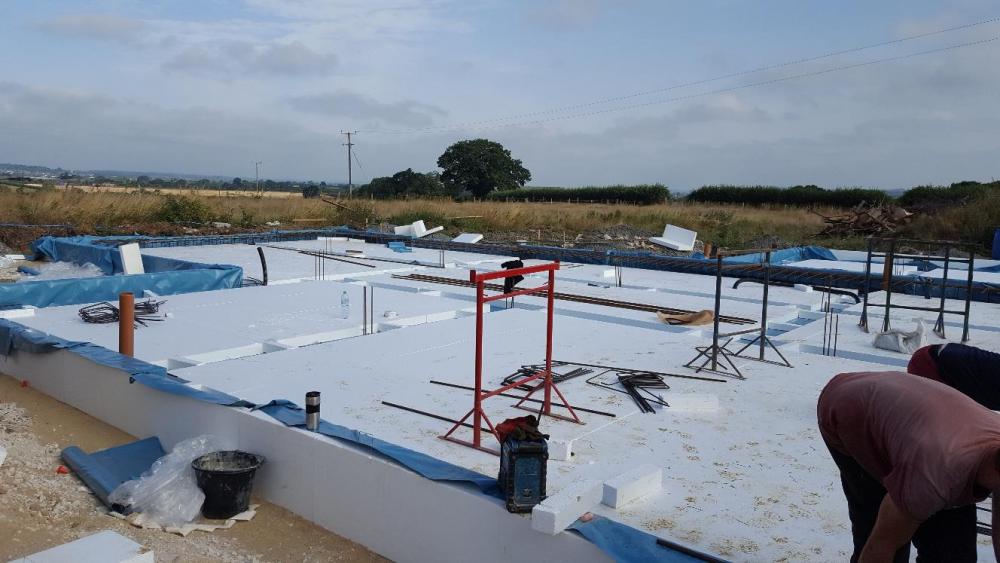
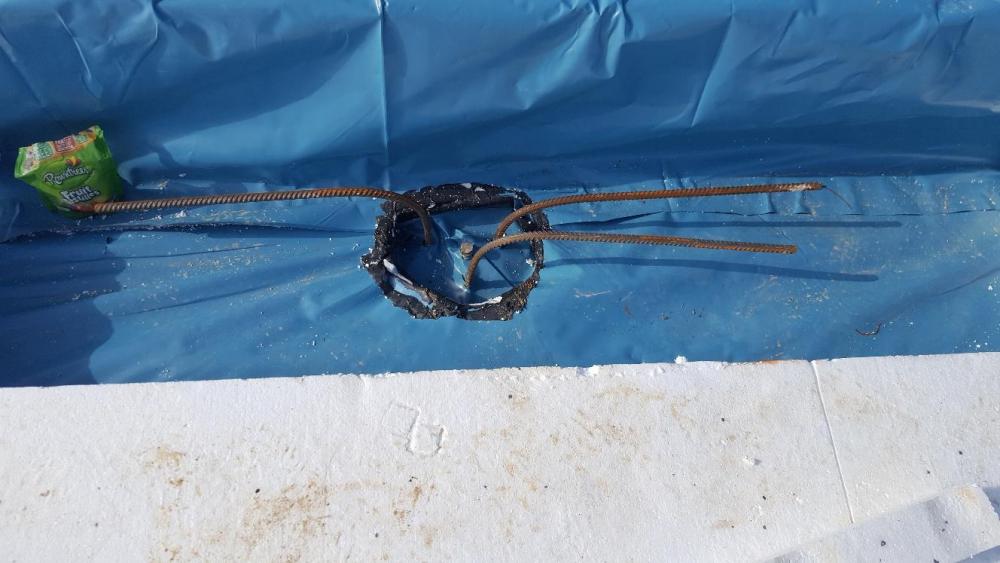
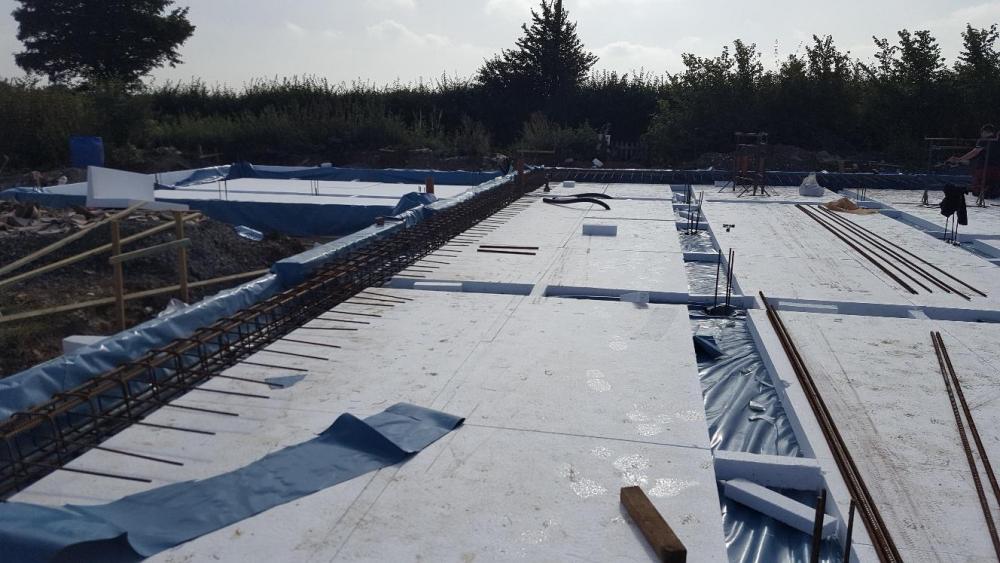
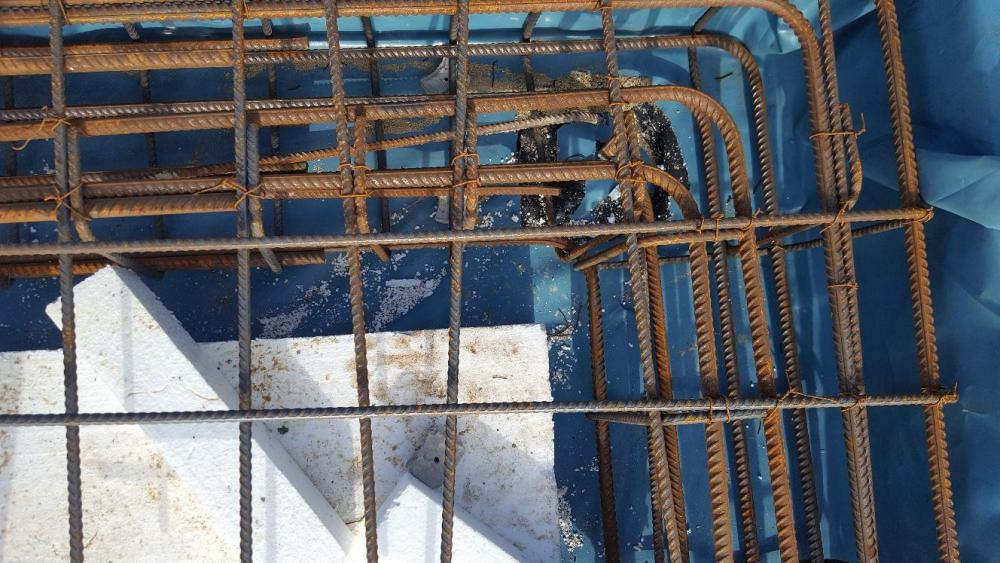

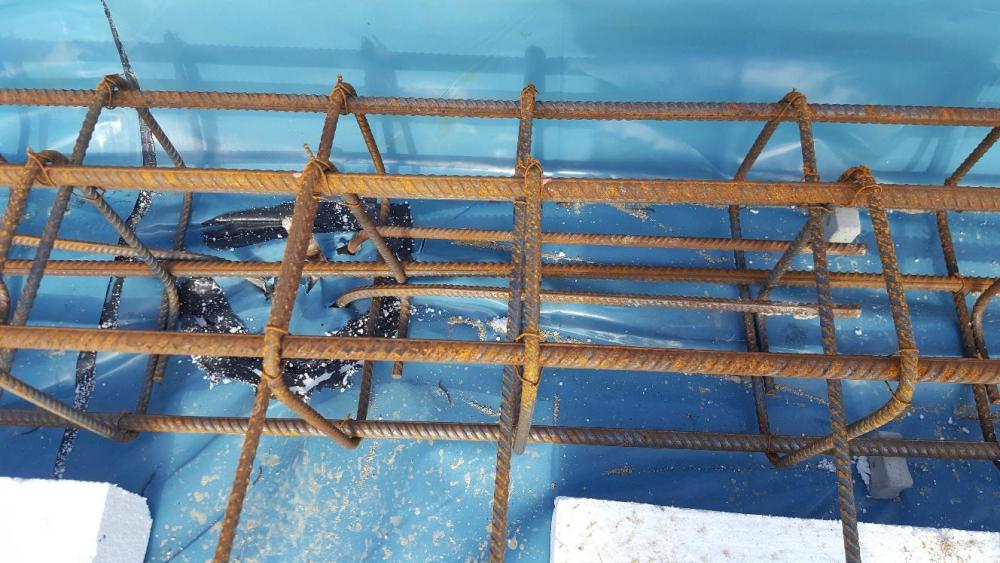
23 Comments
Recommended Comments
Create an account or sign in to comment
You need to be a member in order to leave a comment
Create an account
Sign up for a new account in our community. It's easy!
Register a new accountSign in
Already have an account? Sign in here.
Sign In Now